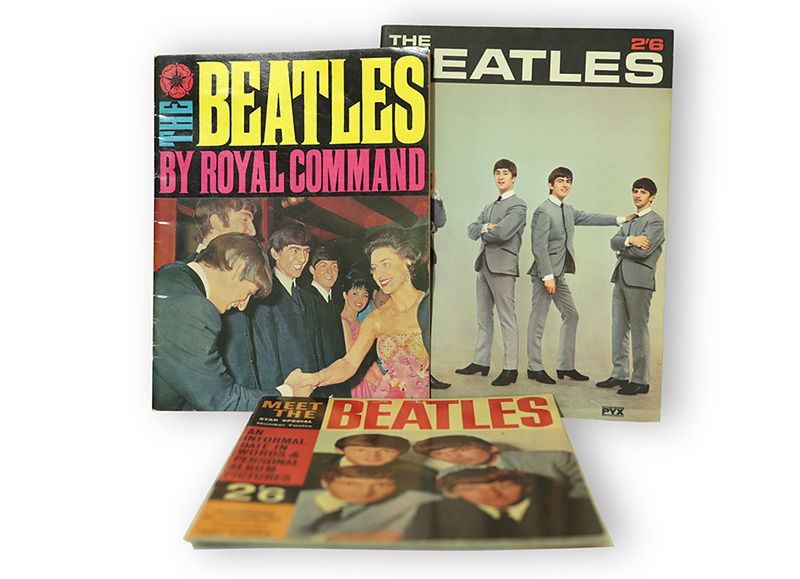Artifact:0005
These Beatles magazines, published during the bands prime in the 1960’s are a prime demonstration of how the methods of music promotion have evolved over time. Before the widespread use of television, magazines like this were used to show fans how their favourite artists really looked and worked.
Largely made up of photographs, the magazines show a carefully curated selection designed to promote an image of the artists. These ones in particular strengthen the aesthetical choices of The Beatles in their early days: neat suits, carefully cut mop tops and an overall sense of mod or teddy-boy style. Bio’s are also included for each member, detailing a short history of their early life and how they came to find their instruments and their place in the band, while avoiding mention of any kind of controversial incidents or opinions.
The magazines also act as a resource for early music journalists. Ritchie Yorke himself has notes in the pages selecting shots to be requested and subsequently licensed for his own articles. This allowed for a simple and expansive pool of promotional photography.
As print media becomes increasingly unpopular, particularly in specialised areas like music, it is evident how an artists Instagram page acts as its replacement, with well-curated photos that progress the aesthetic of the band or artist, details of upcoming appearances and performances, and the promotion of new music releases and merchandise. The social media also acts as a resource for journalists, allowing bands more control on what they’d like to see published.












